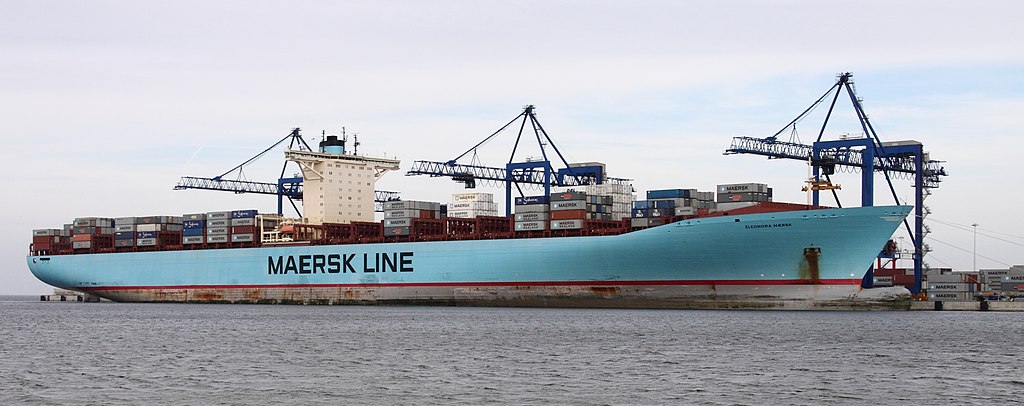Germany’s trade surplus with the U.S. soared to a record €70 billion ($72 billion) in 2024, up from €63.3 billion in 2023, raising concerns amid rising trade tensions. The increase comes as U.S. President Donald Trump enforces 25% tariffs on steel and aluminum imports, fueling uncertainty over potential new duties on German goods.
German exports to the U.S. rose 2.2% to €161.3 billion, led by automobiles and pharmaceuticals, reinforcing the U.S. as Germany’s top export market. Meanwhile, imports from the U.S. dropped 3.4% to €91.4 billion, further widening the trade gap. Experts warn that new tariffs on German imports could disrupt bilateral trade and economic stability, especially as Germany grapples with a two-year economic contraction, making it the only G7 country to do so.
Holger Goerg from the Kiel Institute for the World Economy (IfW) emphasized that the U.S. trade deficit stems from weak global competitiveness, not unfair trade practices. He noted that imposing tariffs would likely hurt U.S. exports, rather than boost domestic manufacturing. Meanwhile, German Chancellor Olaf Scholz stated the EU is prepared to retaliate if new tariffs are imposed.
Trade specialist Damon V. Pike highlighted Trump’s frustration with Germany’s export-heavy economy, suggesting the president could impose tariffs on EU imports as early as next week. While Germany enjoys a strong goods trade surplus, the U.S. dominates in services exports, an important factor often overlooked in trade disputes.
As tensions rise, economists warn that an escalating U.S.-EU trade conflict could have far-reaching consequences for global markets, impacting investment, supply chains, and economic growth.



 Korea Zinc Plans $6.78 Billion U.S. Smelter Investment With Government Partnership
Korea Zinc Plans $6.78 Billion U.S. Smelter Investment With Government Partnership  Asian Stocks Rally as Tech Rebounds, China Lags on Nvidia Competition Concerns
Asian Stocks Rally as Tech Rebounds, China Lags on Nvidia Competition Concerns  U.S. Stock Futures Mixed as Tech and AI Stocks Face Pressure Ahead of CPI Data
U.S. Stock Futures Mixed as Tech and AI Stocks Face Pressure Ahead of CPI Data  Modi and Trump Hold Phone Call as India Seeks Relief From U.S. Tariffs Over Russian Oil Trade
Modi and Trump Hold Phone Call as India Seeks Relief From U.S. Tariffs Over Russian Oil Trade  China’s November Economic Data Signals Slowing Industrial Output and Weak Consumer Demand
China’s November Economic Data Signals Slowing Industrial Output and Weak Consumer Demand  Fed Rate Cut Signals Balance Between Inflation and Jobs, Says Mary Daly
Fed Rate Cut Signals Balance Between Inflation and Jobs, Says Mary Daly  Mexico Moves to Increase Tariffs on Asian Imports to Protect Domestic Industries
Mexico Moves to Increase Tariffs on Asian Imports to Protect Domestic Industries  U.S. Dollar Slides for Third Straight Week as Rate Cut Expectations Boost Euro and Pound
U.S. Dollar Slides for Third Straight Week as Rate Cut Expectations Boost Euro and Pound  Russia Stocks End Flat as Energy and Retail Shares Show Mixed Performance
Russia Stocks End Flat as Energy and Retail Shares Show Mixed Performance  South Korea Extends Bond Market Stabilization Measures Amid Rising Financial Risks
South Korea Extends Bond Market Stabilization Measures Amid Rising Financial Risks  Ireland Limits Planned Trade Ban on Israeli Settlements to Goods Only
Ireland Limits Planned Trade Ban on Israeli Settlements to Goods Only  Asian Technology and Chipmaking Stocks Slide as AI Spending Concerns Shake Markets
Asian Technology and Chipmaking Stocks Slide as AI Spending Concerns Shake Markets  China’s Small Bank Consolidation Struggles as Profits Fall and Risks Persist
China’s Small Bank Consolidation Struggles as Profits Fall and Risks Persist  Gold Prices Slip Slightly in Asia as Silver Nears Record Highs on Dovish Fed Outlook
Gold Prices Slip Slightly in Asia as Silver Nears Record Highs on Dovish Fed Outlook  Oil Prices Rebound in Asia as Venezuela Sanctions Risks Offset Ukraine Peace Hopes
Oil Prices Rebound in Asia as Venezuela Sanctions Risks Offset Ukraine Peace Hopes  S&P 500 Slides as AI Chip Stocks Tumble, Cooling Tech Rally
S&P 500 Slides as AI Chip Stocks Tumble, Cooling Tech Rally 































